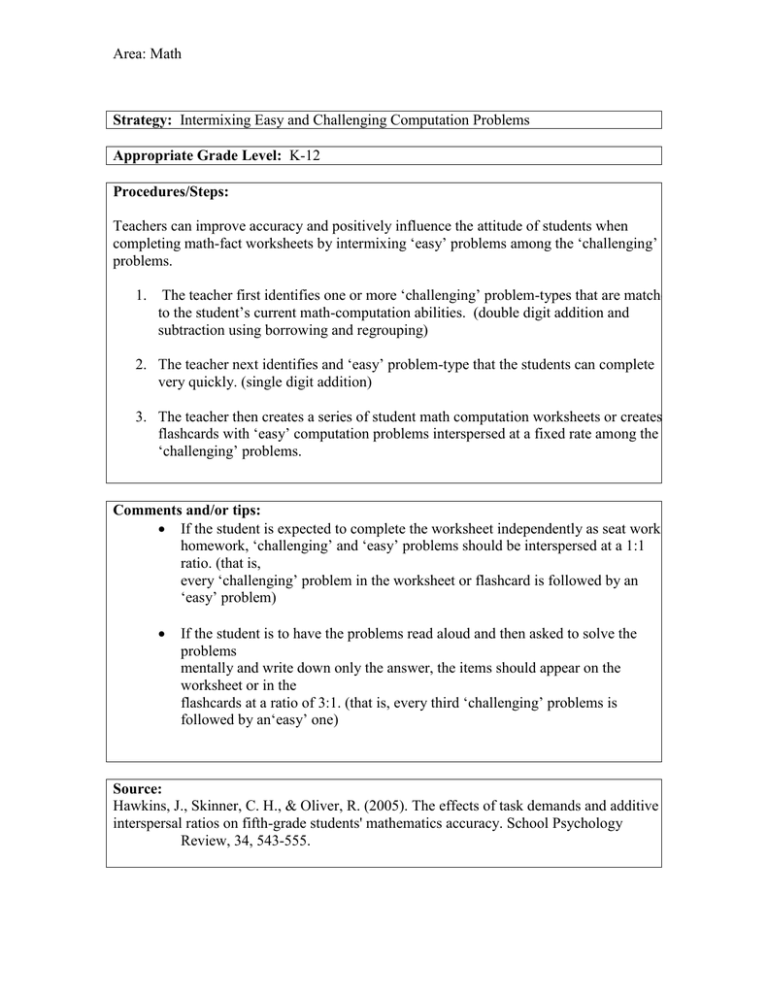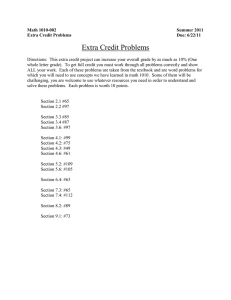Document 14628460
advertisement

Area: Math Strategy: Intermixing Easy and Challenging Computation Problems Appropriate Grade Level: K-12 Procedures/Steps: Teachers can improve accuracy and positively influence the attitude of students when completing math-fact worksheets by intermixing ‘easy’ problems among the ‘challenging’ problems. 1. The teacher first identifies one or more ‘challenging’ problem-types that are matched to the student’s current math-computation abilities. (double digit addition and subtraction using borrowing and regrouping) 2. The teacher next identifies and ‘easy’ problem-type that the students can complete very quickly. (single digit addition) 3. The teacher then creates a series of student math computation worksheets or creates flashcards with ‘easy’ computation problems interspersed at a fixed rate among the ‘challenging’ problems. Comments and/or tips: If the student is expected to complete the worksheet independently as seat work or homework, ‘challenging’ and ‘easy’ problems should be interspersed at a 1:1 ratio. (that is, every ‘challenging’ problem in the worksheet or flashcard is followed by an ‘easy’ problem) If the student is to have the problems read aloud and then asked to solve the problems mentally and write down only the answer, the items should appear on the worksheet or in the flashcards at a ratio of 3:1. (that is, every third ‘challenging’ problems is followed by an‘easy’ one) Source: Hawkins, J., Skinner, C. H., & Oliver, R. (2005). The effects of task demands and additive interspersal ratios on fifth-grade students' mathematics accuracy. School Psychology Review, 34, 543-555.

